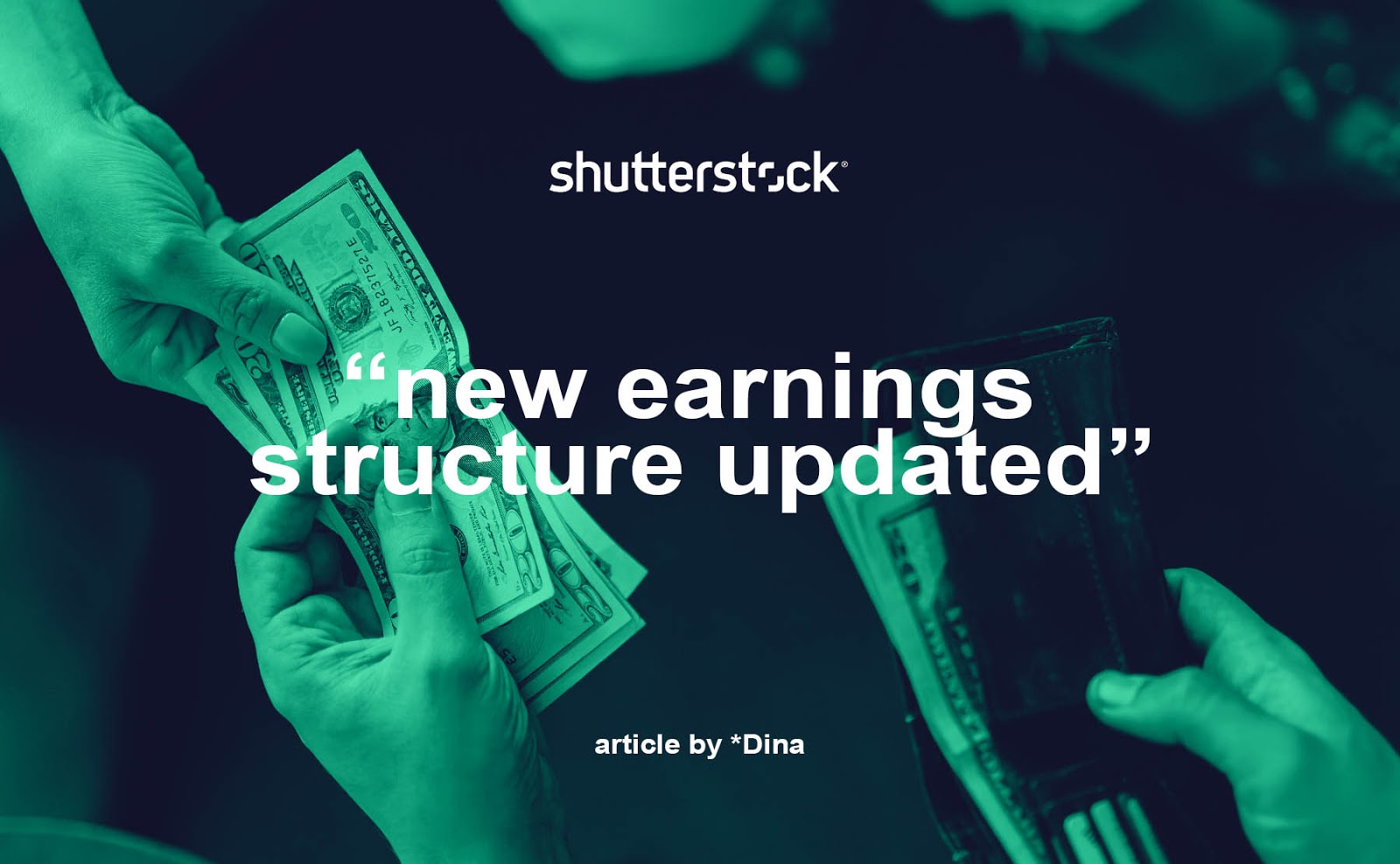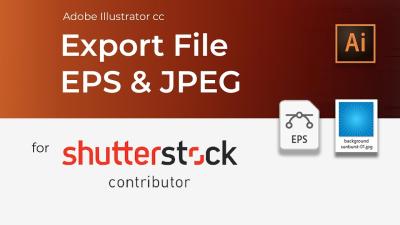If you’re a content creator or a photographer, chances are you’ve heard of Shutterstock. But did you know that Shutterstock isn’t just about selling images? It also offers a way for you to license your data—like your photos, videos, or even other digital assets—through its data licensing programs. This can be a fantastic way to generate passive income and get your work in front of a global audience. In this post, we’ll explore what
How Shutterstock Data Licensing Works

Shutterstock’s data licensing program is designed to give content creators a way to monetize their digital assets, especially data-driven content like images, videos, and even datasets. Here’s a simple breakdown of how it works:
- Uploading Your Content: First, you upload your images, videos, or other digital assets to your Shutterstock contributor account. Make sure your content meets Shutterstock’s quality standards and guidelines.
- Licensing Your Data: Once your content is approved, it becomes available for licensing. Customers—such as marketers, publishers, or app developers—browse Shutterstock’s catalog and purchase licenses to use your assets.
- Choosing Licensing Options: Shutterstock offers different licensing types—standard, enhanced, or editorial—depending on how the customer intends to use your content. Each license type has different pricing, which directly impacts your earnings.
- Getting Paid: When a customer licenses your content, you earn a royalty based on your contributor level (which can increase as you earn more), the type of license purchased, and the total sale amount. Shutterstock handles all transactions and commission calculations, so you can focus on creating more content.
Additionally, Shutterstock provides detailed sales reports and analytics, so you can track which assets are performing best and optimize your portfolio accordingly. It’s a pretty straightforward system designed to make licensing simple and transparent for creators. Just remember, the more high-quality, in-demand your content, the higher your earning potential will be through their licensing platform.
Factors Influencing Your Earnings from Data Licensing
When it comes to earning money through Shutterstock data licensing, it’s important to understand that your income isn’t just about uploading a dataset and hoping for the best. Several factors can influence how much you actually make. Let’s break down some of the key elements that play a role:
Quality of Your Data
First and foremost, the quality of your datasets matters a lot. High-quality, accurate, and well-organized data is more appealing to buyers. Think about it like this: if your data is comprehensive, current, and easy to understand, people will be more inclined to license it. Poorly formatted or incomplete datasets tend to get overlooked, which means fewer downloads and less income.
Relevance and Niche Focus
Next up is relevance. Data that fills a specific need or niche tends to perform better. For example, datasets related to trending industries like renewable energy, AI, or health tech are in higher demand. If you can identify a niche with less competition but high buyer interest, your earning potential can increase significantly.
Pricing Strategy
How you price your datasets can impact your earnings. Too high, and you might scare away potential buyers; too low, and you leave money on the table. It’s a good idea to research what similar datasets are going for and consider flexible pricing options, such as tiered licensing or subscription models, to maximize revenue.
Marketing and Visibility
Even with the best data, if people don’t know it exists, you won’t make sales. Optimizing your dataset descriptions with relevant keywords, eye-catching titles, and clear summaries can boost your visibility in Shutterstock’s marketplace. Promoting your datasets on social media or niche forums can also attract more buyers.
Licensing Terms and Restrictions
Lastly, the licensing terms you set can influence your earnings. Offering different licensing options—such as standard or extended licenses—can help you earn more from each sale. Also, being clear about usage restrictions prevents misunderstandings and can lead to more satisfied customers who are willing to pay for the right license.
Summary
In short, your earnings from Shutterstock data licensing are shaped by the quality, relevance, pricing, marketing efforts, and licensing options you choose. Paying attention to these factors can help you optimize your income and make the most out of your data assets.
Average Income Potential with Shutterstock Data Licensing
Now, let’s talk about what you can realistically expect in terms of income. The truth is, earnings from Shutterstock data licensing vary widely. Some creators earn just a few dollars a month, while others generate a substantial side income or even a full-time revenue stream. So, what’s the average?
Typical Earnings Range
Based on community reports and data from Shutterstock contributors, most data licensors make between $50 to $500 per month. Of course, these figures depend heavily on how much data you upload, the quality, and how actively you promote your datasets. Keep in mind that these are average figures—some top contributors earn several thousand dollars monthly, while newcomers might earn less initially.
Factors That Impact Earnings Potential
- Number of datasets: The more high-quality datasets you have, the higher your potential income.
- Market demand: Datasets in hot industries tend to sell more frequently and at higher prices.
- Pricing strategy: Competitive and well-structured pricing can lead to more sales.
- Promotion efforts: Active marketing and SEO optimization can make your data stand out.
Maximizing Your Earnings
If you’re serious about making a good income from Shutterstock data licensing, consider these tips:
- Focus on quality: Ensure your data is accurate, current, and well-documented.
- Target a niche: Find an industry or theme with high demand but less competition.
- Build a portfolio: Upload multiple datasets to increase your chances of sales.
- Engage in marketing: Use social media, forums, and your network to promote your data.
- Offer flexible licensing: Provide options that cater to different buyer needs and budgets.
Final Thoughts
While there’s no guaranteed income level, Shutterstock data licensing can be a lucrative side gig or even a primary income stream if you put in the effort. Realistically, most contributors see modest earnings initially, but with persistence, quality, and marketing, your earning potential can grow significantly. Think of it as planting seeds—you won’t see a harvest overnight, but with time and care, your income can flourish.
Tips to Maximize Your Earnings from Shutterstock Data Licensing
So, you’re eager to boost your income from Shutterstock data licensing? That’s fantastic! Earning more isn’t just about uploading tons of data; it’s about smart strategies and understanding what buyers really want. Here are some practical tips to help you maximize your earnings:
Focus on High-Dotential Content
Not all data is created equal. Look for trending topics or emerging industries where demand is surging. For example, data related to new technologies, health, or environmental issues often fetch higher licensing fees. Keep an eye on Shutterstock’s trending sections or industry news to spot these opportunities early.
Optimize Your Metadata
Your data’s metadata—the titles, descriptions, and keywords—are crucial. Use clear, descriptive, and relevant keywords to make your data easily discoverable. Think about what a buyer might search for when looking for your data. Well-optimized metadata can significantly increase your visibility and licensing opportunities.
Create High-Quality, Unique Data
Quality always wins. Invest time in creating accurate, high-resolution datasets that stand out from the crowd. Unique data that isn’t readily available elsewhere can command higher licensing fees. Consider niche markets or specialized data sets where competition is lower but demand is high.
Offer Bundled Data Packages
Bundling related datasets can be attractive to buyers. Instead of selling single data files, package them into comprehensive sets. This not only increases the perceived value but also encourages larger licensing deals.
Engage with the Shutterstock Community
Networking with other contributors and staying active on Shutterstock forums can provide valuable insights. You might discover what types of data are in demand or get feedback to improve your offerings. Additionally, participating in community challenges or themes can boost your exposure.
Regularly Update Your Portfolio
Keep your portfolio fresh by adding new data regularly. Frequent updates make your profile more attractive to buyers and improve your chances of recurring licensing revenue. Plus, Shutterstock tends to favor active contributors in search rankings.
Monitor Your Performance and Adjust
Use Shutterstock’s analytics tools to track which datasets perform best. Pay attention to download rates and licensing income. If certain types of data aren’t performing well, consider refining your approach or trying new topics. Data licensing is dynamic, so flexibility is key to maximizing earnings.
Legal Considerations and Licensing Agreements
Before you start licensing your data on Shutterstock, it’s essential to understand the legal landscape. Licensing isn’t just about making your data available; it’s about protecting your rights and ensuring you’re compliant with legal standards. Here’s what you need to keep in mind:
Understanding Shutterstock’s Licensing Models
- Royalty-Free License: Buyers pay a one-time fee to use the data multiple times without additional payments. This is the most common licensing model on Shutterstock.
- Rights-Managed License: Usage restrictions are specified, and licensing fees depend on factors like usage duration, medium, or geographic region. This model is less common for data but important to understand.
Make sure you select the appropriate licensing model when submitting your data, and clearly understand what rights you’re granting to buyers.
Ownership and Copyright
As a contributor, you typically retain copyright ownership of your data unless you explicitly transfer those rights. Always specify in your licensing agreements that you retain ownership, and you grant only the license to use the data under certain conditions.
Respect Intellectual Property Rights
Ensure that your data doesn’t infringe on third-party rights. For example, avoid using proprietary images, trademarks, or confidential information in your datasets unless you have explicit permission. Violating IP rights can lead to legal disputes and account suspension.
Use Clear and Precise Licensing Terms
When you submit data, include detailed licensing terms that specify how the data can be used. This clarity protects both you and the buyer. Shutterstock’s standard licensing agreements are designed to be straightforward, but adding extra notes can help prevent misunderstandings.
Stay Compliant with Data Privacy Laws
If your datasets include personal information, make sure you comply with relevant data privacy laws such as GDPR or CCPA. Anonymize personal data where necessary, and include disclaimers or permissions if required.
Keep Records and Documentation
Maintain detailed records of your data sources, licensing agreements, and correspondence. This documentation can be invaluable if disputes arise or if you need to prove your rights over the data.
By understanding these legal considerations and carefully managing your licensing agreements, you protect your creative work while maximizing your earning potential. Remember, being informed and cautious is key to building a successful licensing business on Shutterstock!
Conclusion and Final Thoughts on Making Money with Shutterstock Data Licensing
Understanding how to monetize your data through Shutterstock’s licensing platform can be a lucrative opportunity for content creators and data providers alike. By leveraging high-quality, relevant data, you can attract a broader audience and generate a consistent revenue stream. Remember, success in data licensing hinges on creating valuable, accurate, and well-organized datasets that meet the needs of your clients.
Key points to keep in mind include:
- Quality over quantity: Providing precise, reliable data ensures customer satisfaction and repeat business.
- Compliance and licensing: Always adhere to Shutterstock’s licensing policies to avoid legal issues and maintain trust.
- Pricing strategy: Research market rates and consider tiered pricing models to maximize earnings.
- Promotion and visibility: Use effective marketing techniques to increase your datasets’ exposure on the platform.
While earning from Shutterstock data licensing requires effort and strategic planning, the potential rewards make it a worthwhile venture. Continuously update and improve your datasets, stay informed about market trends, and engage actively with the platform’s community. With dedication and a focus on quality, you can establish a successful income stream through data licensing on Shutterstock.

